
Jays. The very name conjures images of vibrant hues and sharp, inquisitive calls echoing through the wild. Within the vast and intelligent Corvidae family—a lineage that includes the famously cunning crows, ravens, and magpies—jays stand out as the audacious, often flashy, and undeniably intelligent members of this esteemed avian dynasty. Far from mere feathered ornaments, these small to medium-sized passerine birds are architects of ecosystems, masters of survival, and subjects of captivating study.
Their superficial characteristics, often bright plumage and a noisy demeanor, distinguish them from their larger, darker-feathered cousins. Yet, to truly understand the jay is to look beyond the surface; it’s to delve into a complex world of intricate social structures, remarkable cognitive abilities, and an enduring ecological impact that stretches across continents and climates. This deep dive will uncover the stories of these extraordinary birds, exploring their distinct identities and the indelible mark they leave on the natural world.
From the ancient woodlands of Eurasia to the sun-drenched scrublands of North America, jays represent a rich tapestry of adaptation and evolution. Each species, though bound by the shared intelligence and resourcefulness of the corvid lineage, presents a unique narrative—a testament to nature’s boundless creativity. Join us as we journey through the diverse realms of these avian marvels, beginning with some of North America’s most recognizable and ecologically significant species.

1. **Blue Jay**: No discussion of North American jays would be complete without paying homage to the quintessential Blue Jay, a species so iconic it has become synonymous with the very idea of a “jay.” Instantly recognizable across the Midwest and East, this large songbird is a common sight and sound, its brilliant blue upright crest, blue and black back, and crisp white undersides making it an unmistakable presence. Its often-loud “jayyy jayyy” call is a hallmark of many an American backyard and woodland.
Beyond their striking appearance, Blue Jays are fascinatingly complex creatures. They are known for their noisy calls, a diverse repertoire that includes clicks, peeps, ‘caws,’ and whistles, sometimes even a gentle fluted song during courtship. These vocalizations serve various purposes, from announcing their presence to communicating within their family groups, as they are known to travel in these close-knit units, particularly when acorns—a favored food—are abundant.
Their intelligence, a trait shared across the corvid family, is evident in their foraging strategies. Blue Jays will visit feeders, preferring platforms or tray feeders that allow for a quick exit after grabbing peanuts or sunflower seeds. They are avid hoarders of nuts and seeds, with acorns and beechnuts being particular favorites, often caching them for later consumption—a critical behavior for survival through leaner seasons. While some observers may perceive them as “bullies” at feeders due to their assertive nature, their vibrant presence and clever antics undeniably add a dynamic energy to any backyard.
Read more about: Lynda Obst: A Pioneering Producer and Unwavering Champion for Women in Hollywood Remembered at 74
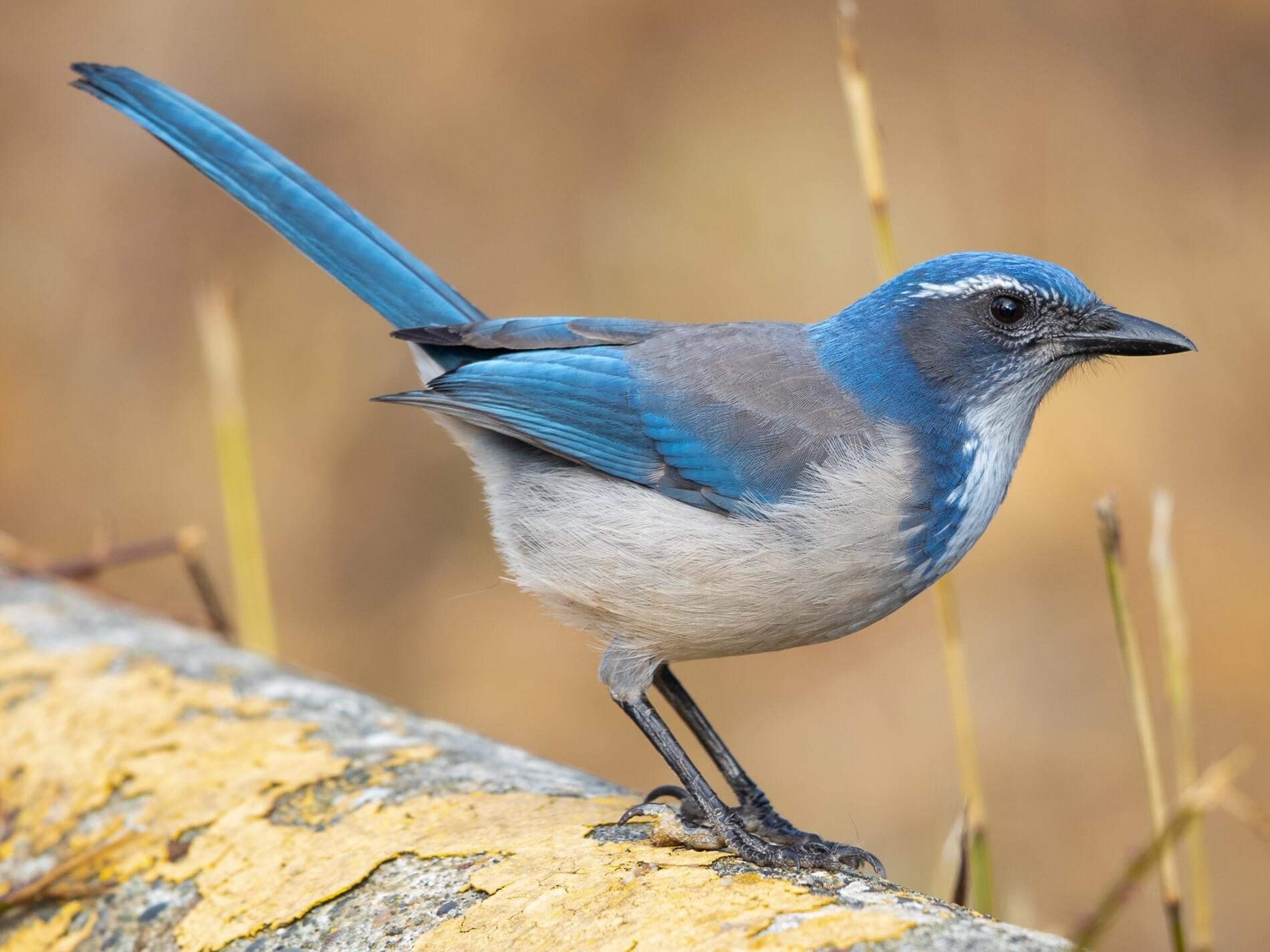
2. **California Scrub-Jay**: Venturing further west, we encounter the California Scrub-Jay, a bird that, while lacking the flamboyant crest of its Blue Jay cousin, possesses an equally captivating charm and intelligence. These bold, crestless blue-and-gray jays are a common sight across lower elevations of the West, particularly in coastal regions, thriving in shrubby areas, oak woodlands, and even suburban backyards. Visually similar to the Woodhouse’s Scrub-Jay, the California species distinguishes itself with more vivid colors, a stark white throat, and a contrasting gray back.
The California Scrub-Jay’s diet reflects its omnivorous nature, shifting from insects and fruit during the spring and summer to a heavier reliance on seeds and nuts, especially acorns, in the fall and winter. Their practice of burying acorns for later consumption highlights their foresight and adaptive foraging strategies, contributing to the dispersal of oak trees across their habitats. These birds are also known for their vocal range, producing scolding cries alongside surprisingly sweet, quiet, musical songs when paired with their mates, showcasing a duality in their communication.
Unlike some jays that maintain large flocks during breeding, California Scrub-Jays typically go off on their own to breed in isolated pairs, with both parents diligently constructing cup-shaped nests of twigs and moss, often hidden within oak trees. The female lays 1 to 5 eggs, which hatch after 17 to 19 days. Their remarkable behavior of screeching over the body of a dead jay, inviting others to join in a vocal lament that can last up to half an hour, as observed by the University of California – Davis, underscores a fascinating, perhaps mournful, social complexity.
Read more about: Florida: An In-Depth Profile of America’s Southeastern Peninsula
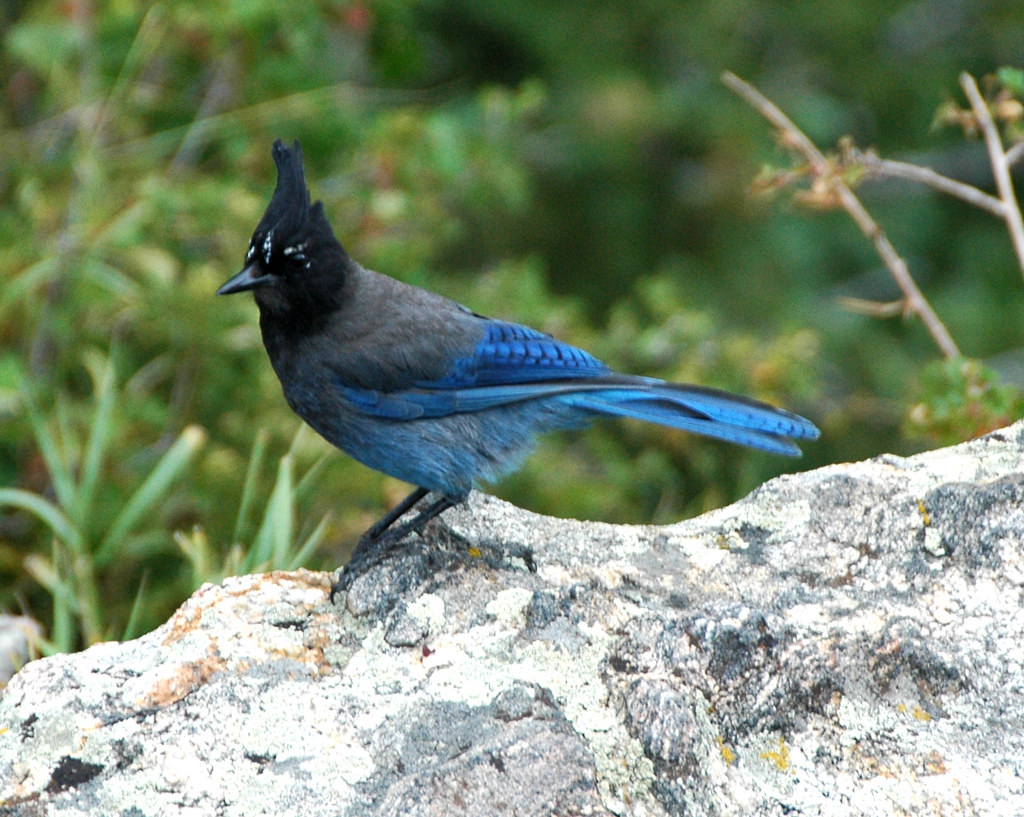
3. **Steller’s Jay**: Ascending into the mountainous evergreen forests of the Western United States, Canada, and Mexico, we meet the dramatic Steller’s Jay, a species instantly recognizable by its striking appearance and distinctive calls. This is the only all-dark jay boasting a prominent black triangular crest that sticks up from its head, with the rest of its head, chest, and back also black, transitioning to a deep blue over the remainder of its body. Small white or blue spots on its forehead add a touch of intricate detail to its otherwise bold plumage.
Steller’s Jays are quintessential forest dwellers, typically exploring the higher canopies but readily swooping into backyards, campgrounds, and picnic areas, especially if food is involved. Their diet is as varied as their habitat, encompassing insects, seeds, berries, and even the eggs and nestlings of other birds. They are also notoriously opportunistic, known for nibbling on unattended picnic lunches and rummaging through garbage, a testament to their adaptable and intelligent foraging habits.
Their vocalizations are equally distinctive, characterized by ‘kaw’ sounds, fast two-toned calls, peeps, and harsh guttural sounds. A truly remarkable aspect of Steller’s Jays is their ability to mimic other noises, including the calls of various bird species, and even mechanical sounds like sprinklers and alarms. These birds travel in flocks outside of nesting season, and their nests, often built near the top of conifer trees, are sturdy constructions of leaves and plant material held together with mud and lined with soft pine needles, highlighting their architectural ingenuity.
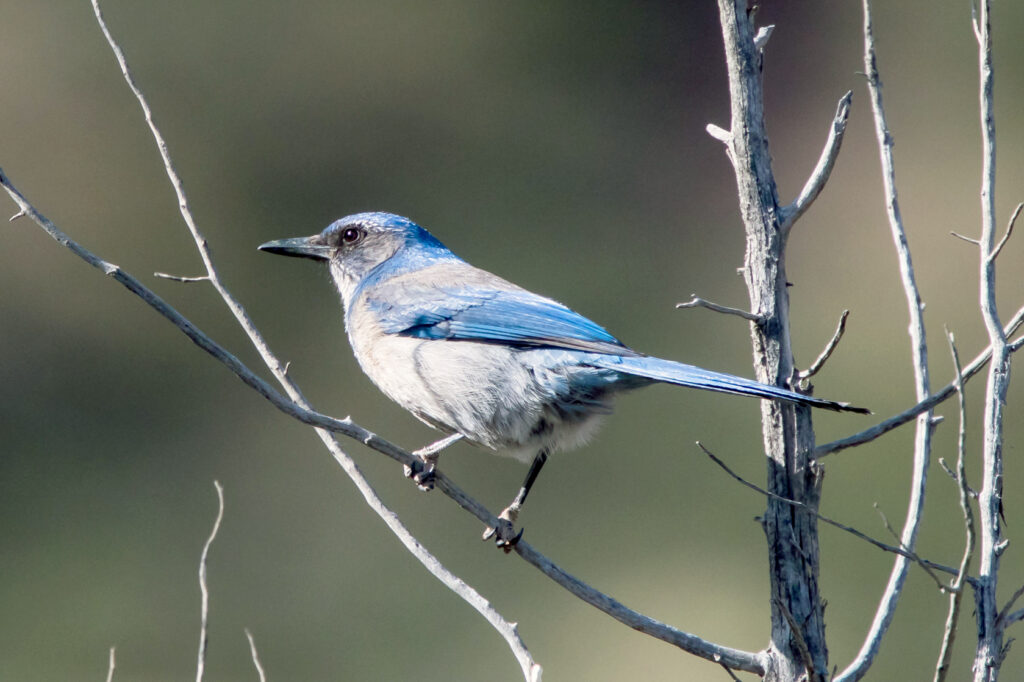
4. **Woodhouse’s Scrub-Jay**: As we journey inland into the southwestern US states and Mexico, we encounter the Woodhouse’s Scrub-Jay, often considered the “Blue-Jay of the Southwest.” While sharing a family resemblance with the California Scrub-Jay, this species presents a slightly duller palette of light blue and dark gray on its back, with a light gray underside. It lacks the prominent crests seen in Blue Jays and Steller’s Jays and features only a small, subtle necklace, distinguishing its elegant, understated appearance.
These jays are residents of wooded areas rich in pinyon-juniper and various scrubby habitats, where they demonstrate a seasonal dietary shift. In summer, their menu largely consists of insects and fruit, providing essential protein and hydration. As winter approaches, their focus pivots to nuts and seeds, a crucial adaptation for surviving the leaner months, allowing them to thrive in their often-arid environments. Their long blue tails are another distinctive feature, adding to their graceful silhouette as they navigate their territories.
Woodhouse’s Scrub-Jays are also known for a less-than-charming, yet undeniably clever, habit: they are opportunistic thieves. They will readily steal food from the stores of other birds, particularly targeting the granary trees of Acorn Woodpeckers, a behavior that underscores their resourcefulness and competitive edge in their ecosystem. Their nests are simple platforms, artfully constructed from twigs and lined with moss and grass, offering a stark contrast to their cunning foraging tactics and showcasing a more modest approach to home-building.
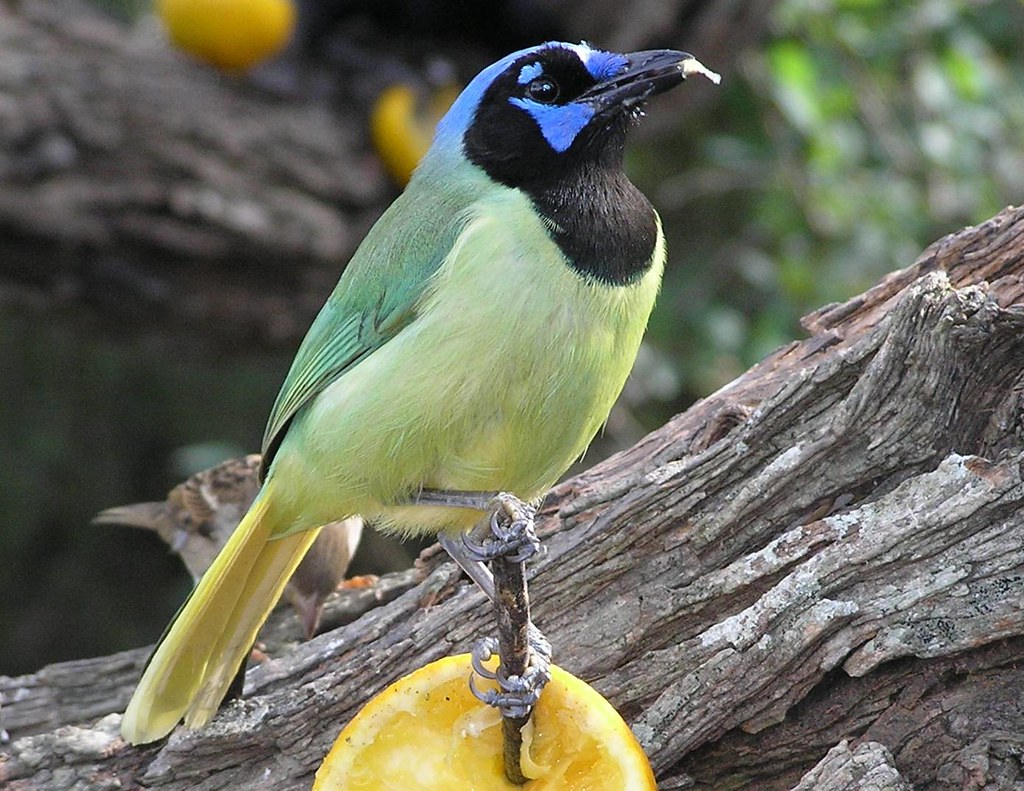
5. **Green Jay**: Our journey takes a vibrant turn as we spotlight the Green Jay, a truly fantastic mix of bright green, blue, and black that stands out as one of North America’s most visually stunning corvids. With dark green backs, paler bellies, and striking bright blue and black heads, this species is a rare and coveted find for birdwatchers in the US, primarily seen only in southern Texas. Its presence marks the northernmost edge of its extensive range, which stretches along the coasts of Mexico, Central America, and South America.
Green Jays are expanding their territory, with sightings now extending as far north as Laredo, Corpus Christi, and even San Antonio, nearly 300 miles from their traditional strongholds. These colorful birds thrive in woodlands near streams and water, where they forage on a diverse diet of insects, fruit, and seeds. Enthusiasts hoping to spot them can often find them at bird feeders in Texan wildlife refuges, where they are known to enjoy oranges, grape jelly, peanuts, sunflower seeds, and corn, highlighting their varied palate.
Beyond their vivid plumage and expanding range, Green Jays exhibit fascinating behaviors, including their ability to use tools—a rare and advanced trait among birds. They have been observed utilizing sticks to pry up bark in search of hidden food, showcasing their exceptional problem-solving skills and ingenuity. Their nests are simple twig constructions lined with moss, leaves, and grass, and remarkably, even their eggs possess a greenish tint, adding another layer of intrigue to this captivating species. Their wide array of fast calls, which can be ‘Kaw’-like, buzzing, clicking, peeps, and screams, further contribute to their lively and engaging presence.
Read more about: Your Ultimate Guide to the Best New Streaming Shows of 2025: Certified Fresh Picks!

6. **Canada Jay**: Shifting our focus to the far North and high western mountains, we encounter the Canada Jay, a species that decidedly breaks the mold of its boisterous, brightly colored kin. Formerly known as the Grey Jay, this bird is characterized by its fluffy gray and white plumage, a small bill ideally suited for twisting off meat, and a distinctive black band running around the back of its white head and throat. Endearingly tame and undeniably cute, Canada Jays don’t just look different; they act differently, often approaching hikers, hunters, and campers with an almost surprising lack of fear.
These jays are residents of boreal, coniferous forests where spruce trees are common, making them a hardy species well-adapted to colder climates. Unlike many jays drawn to nuts and seeds at feeders, Canada Jays prefer meat, bread, suet, and other soft foods. Their most remarkable adaptation is their food-caching strategy: using a special saliva, they mold food into sticky blobs and meticulously stick them into bark crevices or branches, not burying them in the soil. This ingenious method ensures a reliable food source during harsh winters.
While their appearance is gentle and their whispered song is soft, the Canada Jay possesses a “deadly side,” as the context notes. They are opportunistic predators, known to kill baby birds for food and even hunt smaller species like chickadees and warblers. This behavior, alongside their tendency to be more silent than their noisier relatives, often leads other nesting birds to sound an alarm when a Canada Jay approaches. Their nests are built early in conifers, even when snow is still present, constructed from dead twigs, lined with feathers, and strategically placed on the south side of the tree for warmth.
Read more about: Your Garage, Your Rules: 13 Ridiculously Easy Cars to Maintain and Repair Yourself for the DIY Enthusiast

7. **Pinyon Jay**: Our final exploration in this section brings us to the Pinyon Jay, a western species that presents a different, yet equally compelling, narrative of adaptation and concern. Distinguished by its overall blue coloration, with darker backs and paler bellies, white throats, and notably shorter tails, the Pinyon Jay lacks the crests found in many other jays like Steller’s. Males and females share this uniform appearance, though juveniles may exhibit a more grayish-blue hue.
Pinyon Jays are residents of inland western US states, specifically within the pinyon-pine forests from Montana to Oregon, south to New Mexico and Arizona. Their diet is heavily reliant on the seeds from pinyon pines, a dependency that has contributed to a dramatic decline in their population—an estimated 85% since 1970—due to the conversion of much of their tree and shrubby habitat into grazing lands. This ecological specialization highlights their vulnerability to habitat destruction and the critical need for conservation.
These social birds roam in large, noisy flocks, their nasal ‘caws’ serving as a constant communication link to keep the group together as they forage. Beyond pinyon pine seeds, they are also adaptable feeders, consuming juniper berries, acorns, and even other animals such as lizards, baby birds, and insects. Their nests, built of sticks and grass in pine trees and lined with feathers and animal hair, demonstrate their integration into these unique forest ecosystems. A fascinating physiological adaptation is the absence of feathers over their nostrils, which prevents the sticky pine pitch from fouling them during their primary foraging activity.

8. **Florida Scrub-Jay**: Our journey now takes a poignant turn, bringing us to a truly unique and critically important species: the Florida Scrub-Jay. Endemic to Florida, meaning it is found nowhere else on Earth, this crestless bird captivates with its distinctive blue and gray plumage—blue on its head and tail, with gray bellies, backs, and foreheads. Males and females share this striking appearance, though younger birds tend to be a more uniform gray, marking them as instantly recognizable within their exclusive domain.
Their very existence is deeply intertwined with Florida’s vanishing scrub habitats—relatively open, sandy areas dominated by oak scrub. Here, they diligently forage on the ground for insects, berries, and, most crucially, acorns. This ecological specialization renders them highly vulnerable, leading to their listing as vulnerable on the IUCN Red List due to relentless habitat loss from housing development. Their remarkable behavior of caching thousands of acorns annually is a critical survival strategy, with human-provided peanuts at feeders sometimes offering a supplementary lifeline.
Beyond their specialized diet and habitat, Florida Scrub-Jays exhibit fascinating cooperative social dynamics. They form flocks that include young from previous years, sharing the responsibility of protecting against predators and feeding new broods. This collaborative spirit ensures higher survival rates for their offspring, who then mature within the cohesive family unit before establishing their own territories. Their distinct, often harsh calls maintain constant communication within these vital community structures.
Read more about: Florida: An In-Depth Profile of America’s Southeastern Peninsula

9. **Black-throated Magpie-Jay**: From the endemic struggles of the Florida Scrub-Jay, we traverse south to Central America, where the majestic Black-throated Magpie-Jay commands attention. This impressive, long-tailed bird, measuring up to 30 inches, presents a striking array of colors: a conspicuous black crest and throat, vibrant blue patches around its eyes and on its wings, a white-tipped tail, and a pristine white underside. Southern populations may show whiter throats, adding to its visual diversity.
These fascinating corvids thrive in tropical lowland forests, plantations, and semi-open areas with tall trees and hedges, preferring less humid environments than some relatives. Their diet is testament to their omnivorous nature, encompassing a rich blend of seeds and nuts, alongside various insects and even smaller birds. A unique feeding behavior involves standing upright, using one foot to hold food while the other expertly brings it to its mouth.
Black-throated Magpie-Jays construct robust nests of sticks and twigs, carefully lined with soft materials, to shelter clutches of up to seven eggs. Their vibrant, often raucous calls punctuate the tropical soundscape, adding to the region’s rich biodiversity. This species exemplifies the striking beauty and adaptable nature characteristic of the jay family, flourishing in its preferred, partially open territories across Central America.

10. **Brown Jay**: Continuing our journey through the diverse world of jays, we encounter the imposing Brown Jay, a species that, while lacking the vibrant hues of many relatives, makes an impact with its powerful presence. As the largest North American Jay, this bird can be entirely dark brown or display a lighter back and white belly with white-tipped tail feathers in southern species. Adults feature strong black bills and legs, while juveniles surprisingly sport yellow legs and eye-rings.
Primarily found in Mexico and Central America, the Brown Jay extends its range northward into southern Texas, marking its extensive territory’s edge. These birds thrive in dense woodlands with tall trees, always seeking proximity to water sources. Their omnivorous diet showcases adaptability, including insects, rodents, berries, fruits, seeds, and nectar, expertly foraged from the ground or gracefully from branches, embodying the resourcefulness inherent in the jay family.
A fascinating social dimension defines the Brown Jay’s breeding habits; they are communal nesters. Entire flocks share the responsibility of constructing large, cup-shaped nests in forked branches or low shrubs, meticulously lined with soft materials. Several adults contribute to the care of clutches up to eight eggs, which hatch after twenty days, with young remaining under the protective care of the flock for weeks after fledging, highlighting their strong community bonds.
Read more about: Waylon Jennings: Riding the Storm, Forging an Outlaw Legacy in Country Music

11. **Mexican Jay**: Our next stop introduces us to the Mexican Jay, a species known for its nuanced beauty and complex social structures in mountainous terrains. These medium-sized birds are pale, bluish-gray, notably lighter than many relatives, with a grayish upper neckline and chest, and a small, black bill. This elegant profile sets them apart within the New World jays.
The Mexican Jay primarily inhabits the mountains of Arizona, New Mexico, and Texas, thriving within open oak and pine woods and forests. Their diet shifts seasonally: in warmer months, they are formidable hunters of insects, small reptiles, and other birds’ eggs and young. As winter approaches, they rely heavily on cached acorns and pine nuts, a vital survival strategy for leaner times in their elevated landscapes.
Perhaps most compelling is their highly social, cooperative breeding. Mexican Jays maintain cohesive groups even during nesting, with both parents and often other flock members collaborating to build nests and share feeding duties for up to five nestlings. This communal approach significantly enhances the survival rates of their young, who learn essential skills from the entire community for weeks after fledging, reinforcing the strong bonds signaled by their unique nasal wink calls.
Read more about: Robert Redford: An American Icon’s Enduring Legacy as Screen Idol, Visionary Director, and Tireless Activist
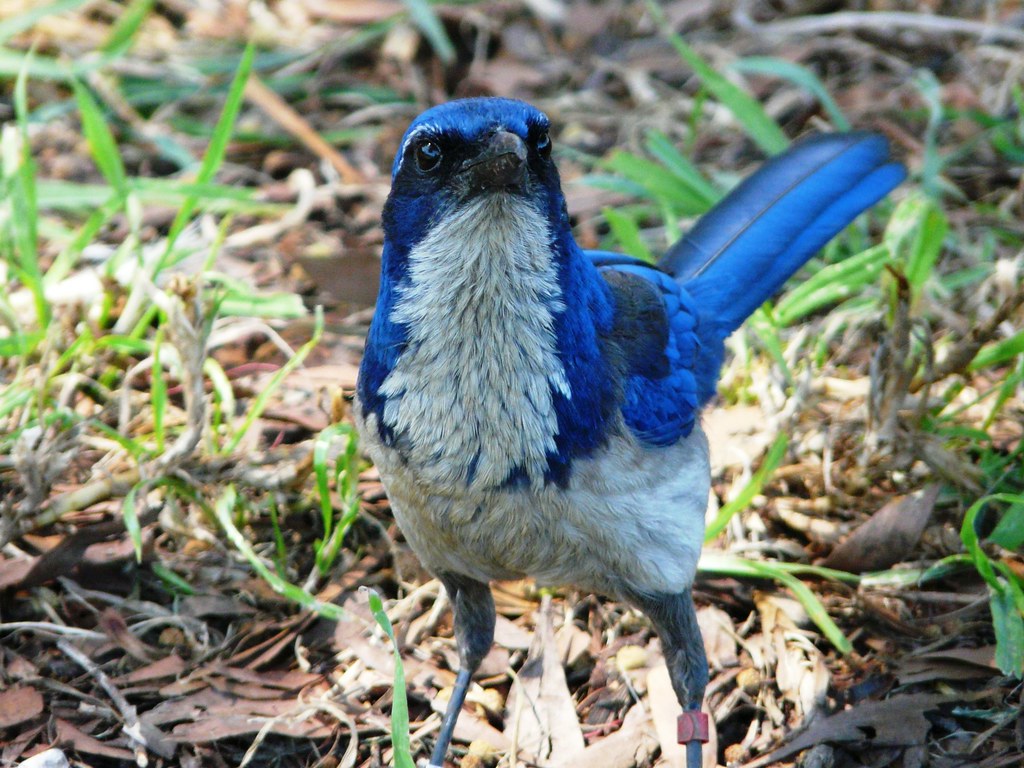
12. **Island Scrub Jay**: From the communal spirit of the Mexican Jay, we journey to a world apart, to Santa Cruz Island off the California coast, where the Island Scrub-Jay holds exclusive domain. Similar to its mainland cousin, the California Scrub-Jay, this brightly-colored bird stands out with darker, more richly pigmented feathers: a vibrant blue from head to tail on its back, contrasted with gray on its wings and a clean white throat.
The species’ name, *Aphelocoma insularis*, signifies its unique existence; it is a permanent resident of Santa Cruz Island, boasting the smallest range of any North American bird, never venturing beyond its island home. This isolated habitat, dominated by oak woodland and chaparral, provides a pristine sanctuary for this rare avian jewel, underscoring a remarkable story of evolutionary adaptation to a confined ecosystem.
The Island Scrub-Jay’s diet is diverse, reflecting the island’s ecosystem. It is an adept predator, feeding on insects, small lizards, mice, and opportunistically, the eggs and young of other birds. In fall, it feasts on abundant acorns, expertly cracking them with its beak. Sturdy nests are hidden in oak trees, built with twigs and lined with rootlets and animal hair for softness, typically housing four eggs, further highlighting the critical importance of preserving this unique island habitat.
Read more about: Florida: An In-Depth Profile of America’s Southeastern Peninsula

13. **Eurasian Jay**: Our exploration transcends continents as we shift our gaze from the New World to the Old, encountering the magnificent Eurasian Jay (*Garrulus glandarius*), a species whose vibrant plumage and complex behaviors have captivated observers for centuries. This iconic member of the crow family boasts striking pinkish-brown feathers, most famously adorned with distinctive bright blue wing patches—an unmistakable splash of color against its forest habitats.
Beyond aesthetics, the Eurasian Jay is a master of mimicry, capable of imitating a wide range of sounds, including other bird calls and human noises, showcasing remarkable vocal versatility and intelligence. This cleverness serves practical purposes, from predator deterrence to complex social communication. Its diet is incredibly varied, encompassing acorns—which it famously hoards and disperses, inadvertently planting new oak trees—alongside seeds, berries, and small animals, highlighting its essential ecological role in forest regeneration across its vast range.
Found across Europe, Asia, and North Africa, the Eurasian Jay thrives in broadleaf and mixed woodlands, adapting to various climates. Its presence is often announced by loud, harsh calls, especially when disturbed, alerting other forest inhabitants. The elaborate nesting habits, involving both parents constructing sturdy cup-shaped nests, further attest to their sophisticated life cycle and their enduring legacy in the natural world.

14. **Black-headed Jay**: From the widespread Eurasian Jay, we venture further into the intricate landscapes of the Himalayas and Southeast Asia to discover the Black-headed Jay, also known as the Lanceolated Jay (*Garrulus lanceolatus*). This species is strikingly distinguished by its prominent black head, which creates a dramatic contrast with its white body, while intricate black streaks adorn its wings and tail, adding subtle complexity to its bold appearance.
Native to the mountainous regions, the Black-headed Jay thrives in high-altitude environments, navigating dense forests and rocky outcrops with impressive agility. This habitat selection underscores its adaptability to challenging terrains where resources can be scarce. Like many corvid relatives, it is a social and omnivorous bird, often foraging in small groups for a varied diet of insects, fruits, and seeds, showcasing its resourcefulness and intelligence.
The Black-headed Jay’s presence in the mountain air is often heralded by its loud, melodious calls, which serve to maintain cohesion within social groups, assert territorial claims, and alert others to threats. Its distinctive markings, coupled with its engaging behaviors and vital role in seed dispersal across its mountainous homelands, firmly establish the Black-headed Jay as a truly remarkable and captivating avian inhabitant of Asia.

15. **White-throated Magpie-Jay**: Our final species brings us back to the vibrant tapestry of Central America with the White-throated Magpie-Jay (*Cyanocorax formosus*), a bird whose striking blue plumage and distinctive white throat present a breathtaking spectacle. This elegant species, closely related to its black-throated cousin, captivates with its long, graceful tail and bright blue feathers that cascade from its crest down its back, creating a magnificent visual display against lush tropical backdrops.
Native to Central America, these birds are predominantly found across Mexico, Guatemala, and Honduras, inhabiting diverse settings from semi-open woodlands and forest edges to cultivated areas and even suburban gardens. This remarkable adaptability allows them to thrive in environments altered by human activity, speaking volumes about their resilience and ability to integrate into various ecosystems.
The White-throated Magpie-Jay is a highly social bird, typically living and foraging in cohesive family groups. This communal living extends to their nesting habits, with elaborate nests built high in tree canopies, often with several group members contributing to the care of the young. Their diverse omnivorous diet of fruits, insects, seeds, and small vertebrates, combined with their loud, often raucous calls echoing through the tropical air, underscores their energetic and social presence.
As our profound exploration of the world of jays concludes, it becomes undeniably clear that these avian marvels are far more than just “noisy, colorful birds.” From the familiar Blue Jay gracing North American backyards to the specialized Florida Scrub-Jay clinging to its unique habitat, and the Eurasian Jay diligently reforesting ancient woodlands, each species paints a vivid portrait of intelligence, adaptability, and ecological significance. They are architects of ecosystems, guardians of biodiversity, and living testaments to nature’s boundless creativity. Their diverse behaviors—from ingenious food-caching strategies and tool-use to complex social structures and remarkable mimicry—challenge our perceptions of avian intelligence and underscore their enduring legacy in the natural world. In their vibrant existence, jays compel us to look closer, listen intently, and appreciate the profound impact these intelligent corvids have on our planet, reminding us that every feather, every call, tells a story worth preserving.



